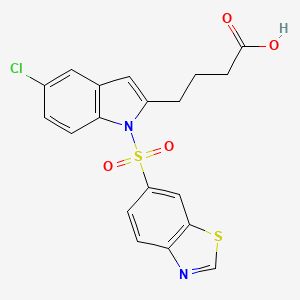zurück
Home |
Fettleber, Steatosis hepatis |
| allgemeines |
Speicherung von Fett in Leberzellen, Symptom
eines metabolischen Syndroms |
| Epidemiologie |
Risikofaktoren: Alkohol, Übergewicht, Diabetes |
| Histologie |
Um eine harmlose NAFLD von einer gefährlichen NASH zu unterscheiden ist eine Leberbiopsie erforderlich. |
Es gibt mehrere histologische Scoreringssysteme. Am häufigsten wird der "NAFLD activity score(2)" verwendet. |
Neu entwickelt wurde der "steatosis activity and fibrosis (SAF) score(3)". |
| Ultraschall |
echoreicheres Leberparenchym
| Grad I |
Leber echoreicher als die Niere. |
| Grad II |
zusätzlich dorsale Schallabschwächung |
| Grad III |
Schallabschwächung so ausgeprägt, dass
das dorsale Parenchym nicht mehr zur Darstellung kommt. |
|
| MRT |
Gadoxetinsäure Ist ein Galle gängiges MRT-Kontrastmittel. |
Es wurde die relative Signalintensität vor und 20 Minuten nach intravenöse Gabe gemessen. |
Bei NASH war die relative Signalintensität höher als bei einfacher Fettleber(1). |
| Folgen |
Kann über Fettleberhepatitis zur Leberscirrhose
führen, Risikofaktor für koronare Herzerkrankungen und Atherosklerose |
| MAFLD |
Metabolic Dysfunction-associated Steatotic Liver Disease |
Auf dem EASL-Kongresses 06/2023 wurde die NAFLD in MAFLD umbenannt |
| NAFLD |
nicht-alkoholische Steatose (Non-Alcoholic Fatty Liver Disease). |
FIB-4 Calculator:
Berechnet aus Alter, GOT, GPT und Thrombozyten das Risiko einer Fibrose. |
| NASH |
nicht-alkoholische Steatohepatitis |
Lanifibranor, pan-PPAR-Agonist. Klinische Prüfung im Rahmen der NATIVE- Studie(5)
 |
Resmetirom: oraler, Thyroxin-Rezeptor-β (THR-β)–selektiver Agonist. |
| TBL1 |
Transducin β -like protein 1. |
Die TBL1-Synthese wird durch ein Überangebot von Fett gedrosselt. |
Dadurch verbrennt die Leber weniger Fett und lagert Fett ein. |
| ELOVL6 |
Fatty Acid Elongase 6 |
Das Enzym katalysiert die Elongation von C16- zu C18-Fettsäuren. |
ELOVL6 erhöht das Risiko einer NASH.(4) |
| SREBF1 |
Sterol Regulatory Element Binding Transcription Factor 1 |
SREBF1 steigert die Transskription von ELOVL6. (4) |
| p62 |
p62 ist an der Entstehung einer NASH beteiligt. |
Eine p62- Überexpression induziert die Bildung von ELEVL6. |
Das geschieht durch Induktion von SREBF1. (4) |
| Therapie |
Nichtmedikamentös |
Lebensstiländerung: Sport, Gewichtsreduktion |
Therapie von Risikoerkrankungen: Diabetes, Hypertonie, Fettsucht, Dyslipidämie |
| Pharmaka |
Bisher nicht in Leitlinie empfohlen:
PPAR-Agonist Pioglitazon
Vitamin E |
| Quellen |
1.) Bastati N, et al.:
Noninvasive Differentiation of Simple Steatosis and Steatohepatitis by Using Gadoxetic Acid–enhanced MR Imaging in Patients with Nonalcoholic Fatty Liver Disease: A Proof-of-Concept Study .
Radiology 271;2014:739-747
doi: 10.1148/radiol.14131890; 2014
2.) Brunt EM, Kleiner DE, Wilson LA, Belt P, Neuschwander-Tetri BA; NASH Clinical Research Network (CRN):
Nonalcoholic fatty liver disease (NAFLD) activity score and the histopathologic diagnosis in NAFLD: distinct clinicopathologic meanings.
Hepatology 2011;53:810–820
3.) Bedossa P, Poitou C, Veyrie N, et al.:
Histopathological algorithm and scoring system for evaluation of liver lesions in morbidly obese patients.
Hepatology 2012;56(5):1751–1759.
4.) Laggai S, et al.:
The IGF2 mRNA binding protein p62/IGF2BP2-2 induces fatty acid elongation as a critical feature of steatosis.
J Lipid Res 2014;55:1087-97
doi: 10.1194/jlr.M045500
5.)Francque SM, for the NATIVE Study Group:
A Randomized, Controlled Trial of the Pan-PPAR Agonist Lanifibranor in NASH.
N Engl J Med 2021;385:1547-58.
DOI: 10.1056/NEJMoa2036205
|
| Teil von |
Leber |
Abdomen |
